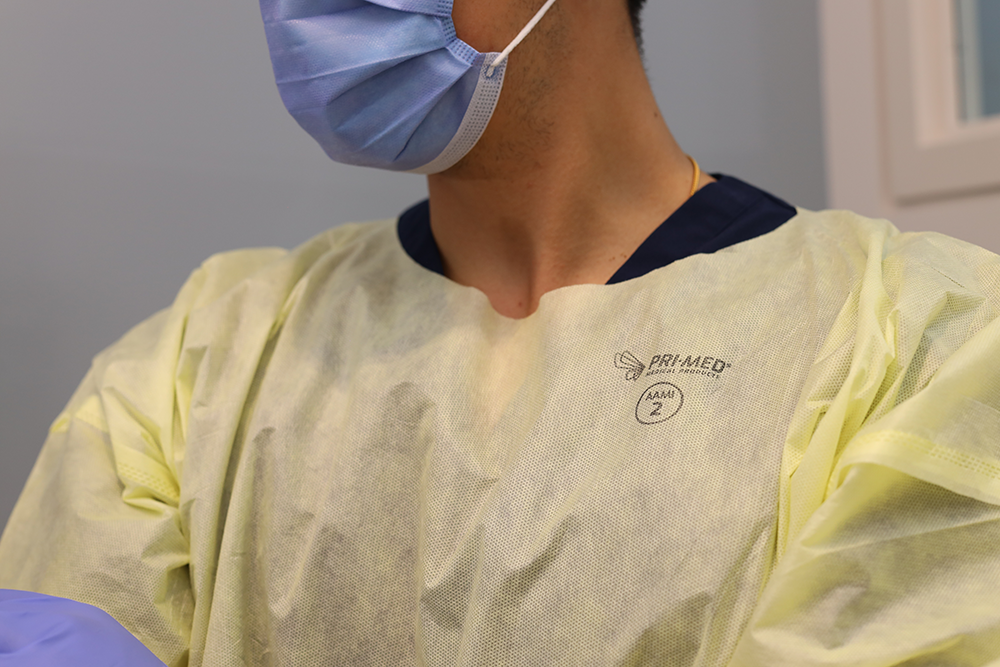With AAMI PB70:2022, we’re aligning performance standards for a safer, healthier future - and PRIMED is leading the way.


Transition Date: The updated AAMI standard, to be adopted in the U.S. as of July 2025, supersedes the previous version and renders it obsolete, though it has not yet been officially recognized by Health Canada.
Standard Update: AAMI PB70:2022 introduces additional protective level claims and packaging label requirements.
Performance criteria for the levels is unchanged. All PRIMED manufactured gowns with AAMI claims continue to exceed the requirements of both AAMI PB70:2012 and AAMIPB70:2022, maintaining the reliable protection you expect.
Expanded Protective Apparel Categories:
Label Requirements:
The changes help empower health care professionals to make an informed decision when selecting the right gown for the task at hand.
* Clinicians should refer to their facility's policy to select the appropriate gown


The AAMI standard focuses on the barrier performance of gowns, which are designed to protect health care workers during surgery and other medical procedures where exposure to blood, body fluids and other potentially harmful substances may occur. They help enable health care professionals to make more informed choice when selecting the right gown for the task at hand.
The design and construction requirements for protective gowns are determined by the expected location and extent of liquid contact, based on the anticipated use. Critical zones are the areas where direct contact with blood, body fluids, and other potentially infectious materials is most likely. For example, for a Full Back AAMI 2 rated isolation gown, the critical zones comprise the entire gown (zones A, B and C), including seams and belt attachment (where applicable), excluding the cuffs, hems and bindings. All zones perform at minimum Level 2.
Isolations gown should be single use. PRIMED recommends that isolation gowns be changed when contaminated, soiled, torn, or compromised in any way. Ultimately, clinicians should consult their department or facility policies to ensure they select the appropriate gown and know when it needs to be replaced or removed.
In alignment with the USP <800> guidelines, PRIMED recommends that Chemotherapy gowns be changed every 2-3 hours or when moving between different compounding areas or when dealing with hazardous drugs.
All individuals using gowns must be aware of the protective capabilities of the gown being worn. Health care workers should assess their risk of exposure to blood, bodily fluids, excretions, and other potential hazards and choose their gown accordingly or adhere to site specific policies that might exist.
Contact our team to ask any questions you might have, they would love to assist you!
Contact our sales team, they would love to assist you in ordering the products you want!
Use our online shop to order our most
popular products.